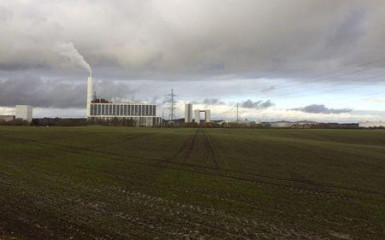KALUNDBORG, Denmark, (Reuters) – What do the world’s largest manufacturer of diabetes drugs, the biggest industrial enzymes producer and a leading offshore power company have in common? In the Danish seaside town of Kalundborg they have plenty.

As pioneers of so-called industrial symbiosis, these companies swap waste and byproducts to cut costs and carbon dioxide (CO2) emissions profitably — an approach that offers big business a financial incentive that could be crucial to nations striving to meet targets agreed at this month’s global climate summit.
Their success has attracted attention globally, with more than 30 corporate and municipal delegations from 20 countries visiting the town this year, including mayors from China’s fast-growing Guandong province.
Drugmaker Novo Nordisk, enzyme producer Novozymes and DONG Energy <IPO-DONG.CO>, together with Denmark’s largest oil refinery, run by Statoil, are part of the group profiting from what is essentially a combined waste-management operation.
The continually evolving model first attracted academia in the 1990s and prompted the creation of the Symbiosis Centre in the town. Its head, Mette Skovbjerg, says businesses digesting the historic emissions deal could learn from Kalundborg.
“What’s attractive is that it’s fairly easy for companies to see themselves in this model. They’re not just going green but going on a path that is very similar to how they do business normally,” she said.
“The driver for this type of collaboration is actually to reduce production costs, not CO2 emissions. The real issue is to achieve primary goals companies have; to secure supplies and access to resources. That’s a logic they understand.”
There are 30 types of materials — ranging from steam, water and condensate to ash, sand, ethanol and biomass — exchanged between companies and utilities in 50 processes at Kalundborg. What’s useless for one, is useful for another.
Steam from DONG’s power station is pumped along pipelines around town to the Novo Nordisk and Novozymes plants, where it is used as a cleaning agent, and to the refinery, where it is used in several processes.
The power station’s ash and gypsum waste are moved to a cement company and a plasterboard maker respectively.
Novo Nordisk and Novozymes’ waste water is purified for municipal use, while their leftover biomass is converted to fertiliser. Statoil, too, has reduced emissions by turning waste sulphur and nitrogen into fertiliser and also feeds back used water to the power station and a water reservoir.




